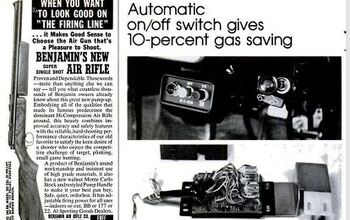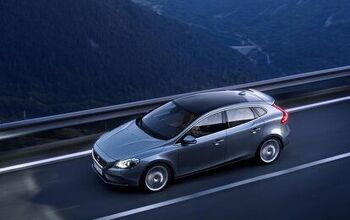The Problem With Start-Stop Systems
For an industry under ever-increasing pressure from government emissions standards, start-stop technology (which shuts off engines under idling conditions) seems like an easy route to improved fuel efficiency. Cheaper and less complicated than a true hybrid system, a number of automakers from BMW to Kia are proliferating start-stop technology across their product lines without hybrid-like price premium. Since this technology represents a relatively easy, incremental efficiency upgrade, we’ve wondered why it hasn’t been made available stateside, where hybrids are making up a growing proportion of sales. Detroit’s executives seem to think it’s a good idea, and Mazda has even gone so far as to complain that EPA test results refusing to show the Japanese test-cycle’s 7-9 percent improvement is the main factor preventing it from bringing more stop-start equipped vehicles to the US. But there’s another issue preventing stop-start from becoming standard issue industry-wide, and it’s actually remarkably obvious.
Of course, the start-stop systems have smarter computers than that, which is why the systems rarely activated in AM und S’s test. And ironically, the three vehicles equipped with the system actually logged the top CO2 emission results in the test despite the recalcitrance of their technological advantages. Still, just as cold-weather performance remains a huge question mark in the development of electric vehicles, living in a cold climate could seriously limit the advantages of this seemingly inevitable efficiency-boosting gizmo.
More by Edward Niedermeyer
Latest Car Reviews
Read moreLatest Product Reviews
Read moreRecent Comments
- Lou_BC Well, I'd be impressed if this was in a ZR2. LOL
- Lou_BC This is my shocked face 😲 Hope formatting doesn't fook this up LOL
- Lou_BC Junior? Would that be a Beta Romeo?
- Lou_BC Gotta fix that formatting problem. What a pile of bullsh!t. Are longer posts costing TTAC money? FOOK
- Lou_BC 1.Honda: 6,334,825 vehicles potentially affected2.Ford: 6,152,6143.Kia America: 3,110,4474.Chrysler: 2,732,3985.General Motors: 2,021,0336.Nissan North America: 1,804,4437.Mercedes-Benz USA: 478,1738.Volkswagen Group of America: 453,7639.BMW of North America: 340,24910.Daimler Trucks North America: 261,959


































Comments
Join the conversation
** BREAKING NEWS ** Automobiles have higher energy requirements when it's cold outside. Shocking stuff. You sit in a traffic jam on a warm day and then try and make an argument that S&S doesn't make sense. Easy to use, easy to implement, good sense all round. As a design objective: - make a vehicle use as high a proportion as possible of the fuel consumed to create forward motion - ...you'd have built S&S in from the beginning.
Regarding Start & Stop systems: I'm not sure if this is related to S-S technology but since it involves the first vehicle I purchased having this system I have my suspicions. It's either just a battery/electrical system issue or it's related to the battery/electrical system in support of S-S. I purchased a 2013 BMW model X3 SUV in Aug. 2012. The S-S system works fine (instant, effortless, & quiet) but I've had some major battery discharging problems beginning in Oct. 2013. I was quite puzzled considering how much the vehicle cost and the fact that it was only a little over a year old. I charged the battery back up to 100%. Then in Dec. another low battery warning. Another re-charge. Another warning in Jan. By this time I'm getting pretty frustrated that I've had to re-charge the battery three times in four months. I scheduled an appointment with the dealership service dep't. They had to replace the battery, battery cable, and battery sensory cable. Wanting to find out what this was all about I contacted four different people: The salesman, a service tech, the service dep't. manager, and the BMW North American Customer Service Dep't. rep. It was obvious at the onset that they weren't open to any discussion dealing with the issue. When I first inquired I got the impression that none of them knew what the problem was (or maybe just didn't want to talk about it). Initially I got varying responses ranging from the too much computer technology for the electrical system to support to it being related to cold weather. After pressuring them further they finally stated that it was an inherent problem with BMW vehicles in colder states. It's bad enough that I have to suffer with sub zero temps here in Minnesota - now I'm being penalized with the vehicle I drive (lol). But the real kicker was when I went to pick up the vehicle. The service manager told me that I should get a battery charger and expect to have to re-charge the battery every once in awhile. Also that if the warning light came on while out driving, I should make sure and drive for a least a couple of hours so the alternator could re-charge the battery (just when I thought I was going to save money on a fuel efficient vehicle). I responded by telling him that if the salesman had been honest and told me of this issue I probably wouldn't have purchased a vehicle with S-S technology. During my discussion with the national customer service (now there's a contradiction of terms) rep I inquired if BMW would be willing to re-purchase. I was told that for this to happen the dealership service dep't. would have to declare that it was a defective vehicle. I guess I can expect that to happen when it gets really hot here in Minnesota in January. I'm not as upset with the engineering flaw on the part of BMW as I am with the way their staff handled it.